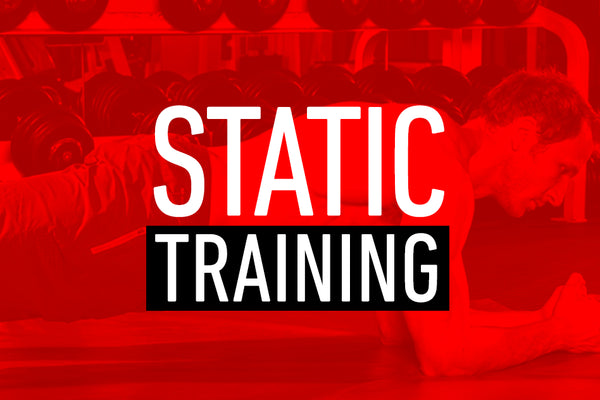 When one walks into the gym, the norm is of course movement. When one thinks of anything fitness, conventional wisdom is based on the ability to move the body and get it sweating. What if there was a way to get that burn in the muscles and that sweat on your brow without barely moving.
When one walks into the gym, the norm is of course movement. When one thinks of anything fitness, conventional wisdom is based on the ability to move the body and get it sweating. What if there was a way to get that burn in the muscles and that sweat on your brow without barely moving.
Sound too good to be true?
It is because it still hurts like hell.
Welcome to the world of isometric training, or as the cool folks call it, “static training.”
Static training is the opposite of what one usually thinks of when it comes to fitness which is dynamic training (when joints are used to perform movements). The majority of movements down in the gym are of course dynamic movements, but static training has its place in anyone and everyone’s workout routine.
Static training occurs when the body moves very little or not at all while contracting the muscle fibers. Benefits of this form of training are increased muscular endurance, increased muscular strength, muscle building and even saving time.
Think about a person holding a 45lb plate over their head. Now at first, this might not seem so difficult. Over time, however, the muscle fibers become fatigued and must adapt to the workload in the midst of being fatigued. This allows the muscle fibers to build more endurance to be able to withstand the workload longer the more and more the exercise is done. This will also benefit the person when doing a dynamic overhead movement like a military press.
Static training also requires a person to engage every single muscle fiber as well during the prolonged and still lift. With every fiber firing off this builds the strength of each fiber individually (which will indirectly lead to more size of the fiber as well). And shaking is completely normal when doing a static training exercise because the shaking is the body reacting to each fiber firing off to hold the workload while under stress.
Some popular static exercises (and what they train) are:
- Wall-Sits (legs)
- Planks (core)
- Pull-up Holds (biceps and back)
- Dumbbell Holds (entire arm and builds grip strength)
- Overhead Plate Hold (delts/shoulders)
With the amount of stress placed on the body, static training does not need to be done for too long, maybe 20-30 minutes a session. One needs to listen to their body as well. Static training has its own particular way of letting a person know when they are done (usually it is pain) and one should not go against that message.
Static training can be done by itself or even be implemented into a current workout routine. Regardless, the benefits of static training expand into other forms of training and should be considered when developing a workout routine.






